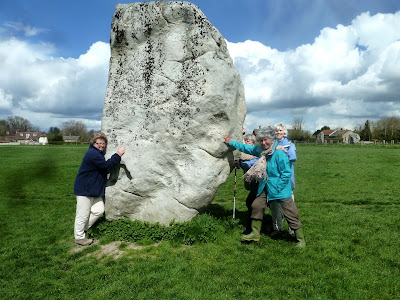St John's Church with its Norman tower.
The lovely medieval church of St John was the setting for Devizes Chamber Choir's spring concert on Saturday evening, April 27th. We rehearsed for two hours in the afternoon, and sounded, well, not too good. I think we were all holding back a little, and saving our voices for the evening's performance, which of course was wonderful.
We sang Mozart's "Te Deum," a little hesitantly I think, but by the time we had warmed up a little, our performance of Cherubini's "Requiem" was really wonderful. It is not an easy work to sing, (what is easy to sing!) but with the organ accompaniment we sang really well. Our long notes, sung very quietly, were well sustained, and without the need for everyone to gulp for air midway between the bars. We tried to stagger our breathing, so that the sustained notes sound even. Not easy to do!
The Nave, looking towards the audience seats.
The "Requiem" lasts for over an hour, but during the evening we had an interval in the middle of the work, in order for the choir and the audience to enjoy a glass of wine. I did not partake, as a little wine goes straight to my head, and I didn't want to sing the second half feeling slightly tipsy in church!
The Nave, looking towards the high altar.
I'm hoping to place some photos of the choir here soon, that's when a friend sends me some he took of us standing and looking pleased with ourselves after the concert. I spoke to friends afterwards, and all commented on how lovely the choir had sounded.




































